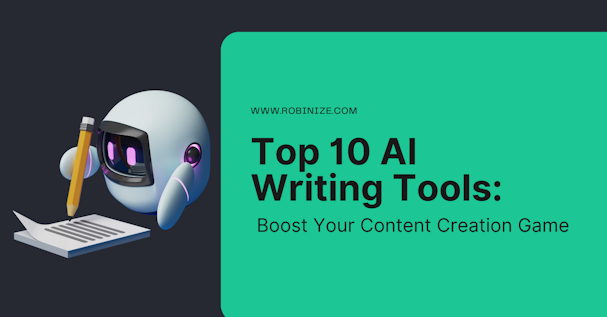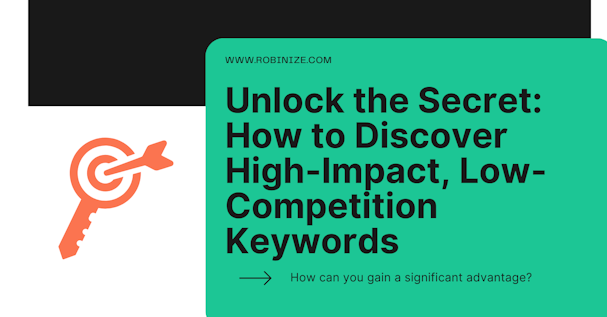YouTube SEO: Step-by-Step Guide 2023

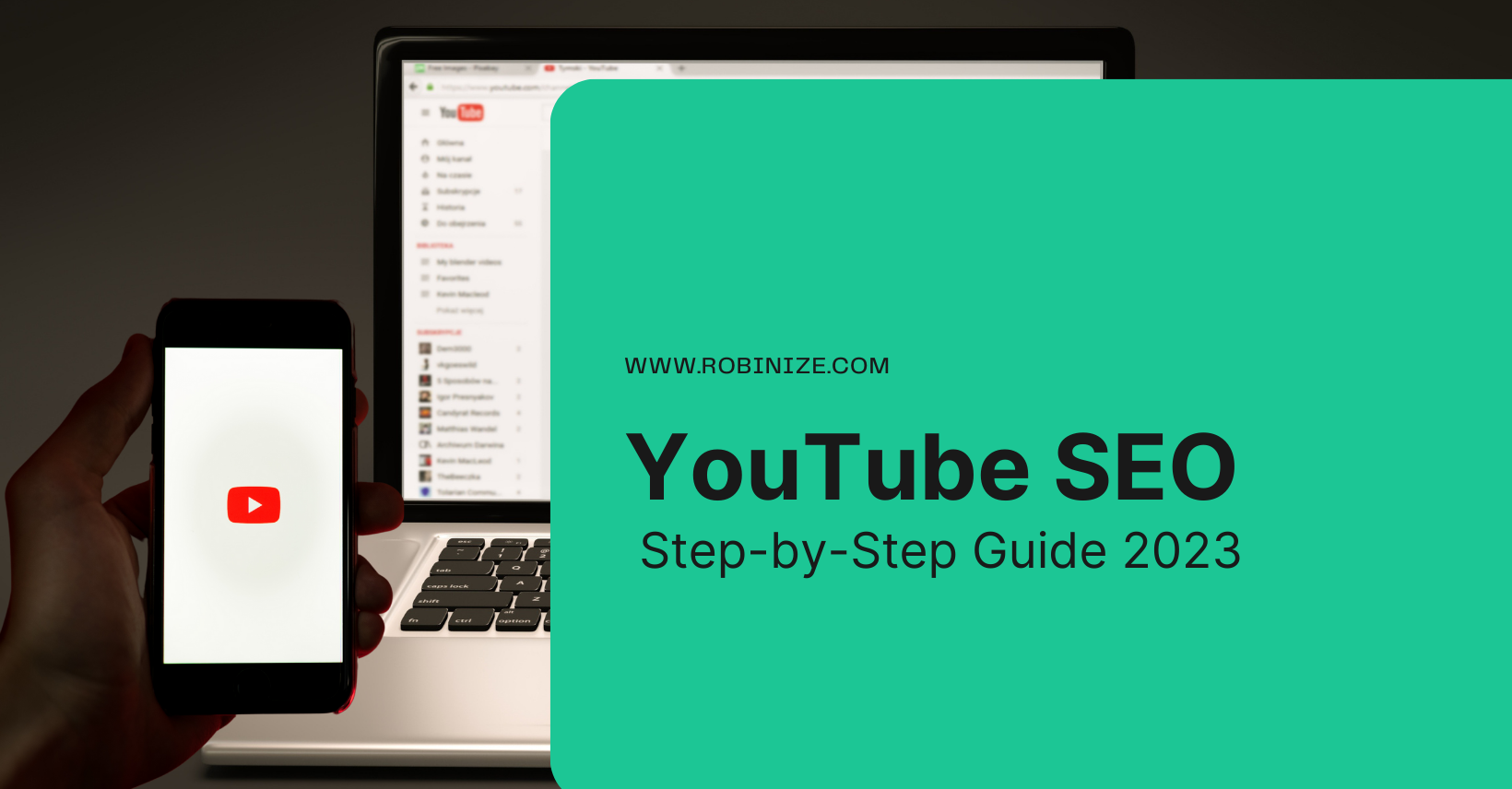
How do you search for information nowadays? You google it, of course. And when you put your query to a search engine, you will often notice YouTube as a top result, especially in the last decade.
With over 2 billion monthly active users, YouTube is the second most trafficked site globally.
It is an excellent place for businesses, individuals, and organizations to showcase their talent, products, and services to the world. However, getting noticed on the platform can be a challenging task. This is where YouTube SEO comes into play.
Does SEO really work for YouTube?
Yes, SEO DOES work for YouTube.
Imagine your YouTube video is a pizza. SEO is the secret sauce that makes it extra delicious and helps it stand out from all the other pizzas.
In this article, you will learn the best ways to improve your SEO for YouTube. We will discuss everything from proper YouTube keyword research and optimizing video titles, subtitles, captions, and descriptions to analytics.
Follow these tips, and apply them, and you will see more and more viewers and subscribers.
Let's get started.
What is SEO on YouTube, and why is it important?
YouTube SEO (Search Engine Optimization) is the optimization of your YouTube videos to rank higher. 90% of people discover new brands or products within the platform, so you want to be sure your videos are top results when a potential follower or client searches for a relevant keyword.
Speaking of keywords, SEO can be the key to success in a crowded and competitive platform like YouTube, allowing you to stand out and achieve your goals.
Now that you know the importance of YouTube SEO, let's dive into practical steps you should do before and after you hit that publish button.
Step 1: Conduct Keyword research
Keywords are crucial for optimizing YouTube and Google search rankings. They help the platform recognize the topic of the video, catalog its content, and link it to relevant user intent.
Generate a list of keyword ideas - YouTube’s Search Suggest feature
The first and easiest way you definitely need to do is to head up to YouTube and pop up a topic your video is about. YouTube’s Search Suggest feature will give you a bunch of phrases related to your topic.
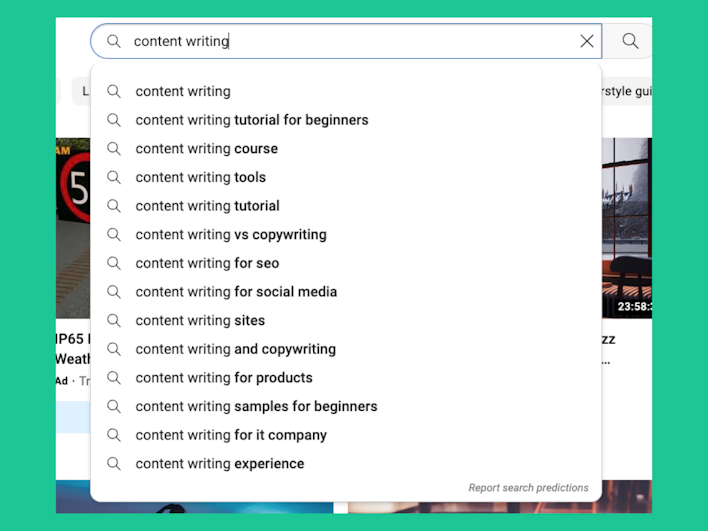
These keywords are GOLD.
Why?
Because these are phrases that people actually type into YouTube. You can be sure these keywords are popular since YouTube is suggesting them.
Check “Most Popular”
Another way to find popular keywords is to go to a popular video in your niche… and copy the keywords the video is optimized around.
Keyword optimization is a KEY part of YouTube SEO, so if a video has lots of views, chances are, that video is optimized around a popular keyword.
To do this, go to another channel in your niche and sort their videos by “Most Popular”
Next, choose a video from the list that you can create an awesome video around.
Finally, check the keywords that video is optimized around.
You can do this by checking out the keywords the video uses in its title, description, and tags. (With the VidIQ Chrome extension, you can see the video’s tags right on the page.)
Choose the best keyword from your list
Now that you have a list of keywords, it’s time to choose the best one from your list.
Specifically, you want to target low-competition keywords.
This is CRUCIAL if your channel doesn’t have that many subscribers yet.
How do you check this?
You simply search for your keyword in Google with a search operator site: youtube. And the number of “About results” represents the total number of videos on YouTube about that topic.
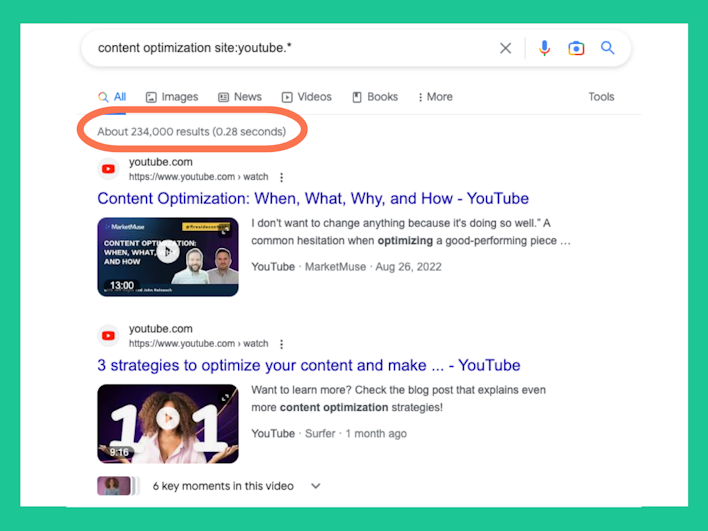
You want to target keywords with a low “About results” number.
How low?
Well, every industry is different. So, focus on choosing keywords with low competition relative to other videos in your niche rather than a specific number.
Finally, search for your keyword in Google.
Why?
Most views on YouTube come from within YouTube’s platform.
And there is huge potential. Your video can get 2-5x more views if you can get it ranked in Google.
Google reserves a good part of the first page for video results.
Usually, Google uses video results for these types of keywords:
How-to keywords (“how to start a YouTube channel ”)
Reviews (“Nike Air Force 1 review”)
Tutorials (“Google Analytics set up ”)
Anything fitness or sports-related (“Dance Cardio”)
Funny videos (“Cute cats”)
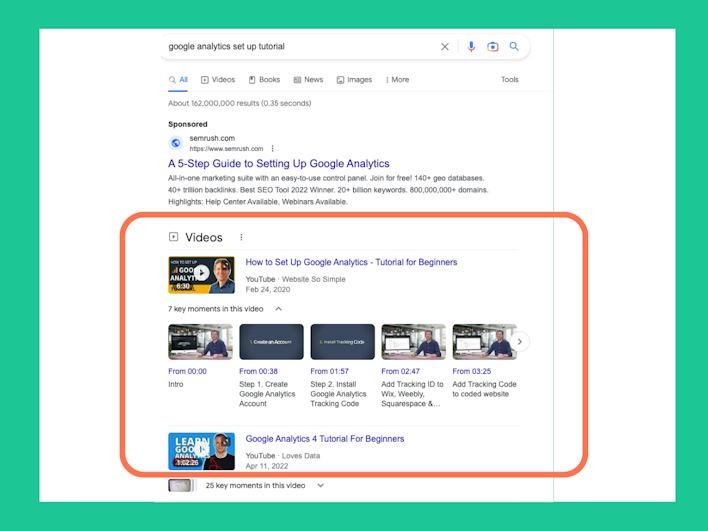
Why is this important?
If you optimize your video around a keyword that doesn’t have any video results in Google, you will get traffic only from people searching on YouTube.
But if you optimize for a video keyword, you’ll also get traffic to your video directly from Google’s first page.
Now you probably wonder how to find these magical keywords?
All you need to do is search for one of the chosen keywords and see do they have YouTube video results looking like this:
When you find a Video Keyword, it’s time to check if there’s any search volume for that keyword.
Make sure that your target keyword gets at least 100-1k searches per month in Google. You can find this information using tools like Google Keyword Planner, Ahrefs, or Semrush.
Now that you have a great keyword, it is time to create a video around that keyword.
Step 2: Create High Retention Video
If you want to appear at the top of YouTube search results, make people keep watching.
The higher the watch time - the better Audience Retention.
And here are best practices on how to create high-retention videos:
Start the video with the topic of the video and tell your audience what they can expect in the first 10 seconds
Skip long introductions and jump right into useful content
Add open loops to give a preview of what is coming next to keep your viewers engaged
YouTube's algorithm evaluates content quality based on Audience Retention.
Fundamentally, give value to your viewers because if your video stinks, it will not rank well, regardless of how well it has been optimized for SEO. A big part of YouTube's algorithm evaluates your content quality based on Audience Retention and Interaction.
We explained retention and audience interaction include:
Video comments
Comments are strongly correlated with ranking highly in the search results, and when someone leaves a comment, it sends a strong message to YouTube that they probably enjoyed the video.
Subscribers, after watching a video
When a viewer subscribes to your channel after watching one of your videos, it indicates that the video is exceptional.
The most effective method to increase your subscriber number? Ask viewers to subscribe.
Click-Through-Rate (CTR)
The percentage of people that click on your video after entering their query is called Click-Through-Rate (CTR). And the best way to boost your CTR is by creating compelling thumbnails and titles.

Thumbs up/Thumbs down
This one is self-explanatory. ;)
Video Length
Like blog posts in Google, longer videos rank better on YouTube.
Longer videos have the edge over short videos when it comes to YouTube SEO.
But don't sweat too much about the specific length. Instead, focus on creating the best video possible; if you provide value, people will watch it.
You can track all these statistics in the YouTube Studio.
Now that you’ve created your High-Retention video, it’s time to upload it and optimize it for SEO.
Read our other articles on our Robinize blog
Step 3: Optimize YouTube Video
This is how you can maximize the SEO of your video:
Say your Target Keyword
You may have observed that YouTube transcribes videos automatically and with great accuracy. If you mention your target keyword in your video, YouTube will take notice of it.
And when you actually SAY the keyword, YouTube will better understand that your video is about that term
Video Title
The title of your video should be at least 5 words long so you can include your full keyword without keyword stuffing. Also, you get a slight video SEO boost by putting your keyword at the beginning of the title. So if you are trying to rank for “SEO tutorial” you’d want a title like “SEO Tutorial: Learn How to optimize your website ”.
Description
Your video description is super important because it helps YouTube and Google understand the context of your video. The better they understand your video, the higher you’ll rank.
Here are the basic guidelines for the description:
Include your keyword in the first 25 words
Make the description at least 250 words
Include your keyword 2-4 times
This SEO-optimized description helps tell Google and YouTube what your video is about without being spammy.
Tags
Tags aren’t crucial, but they help.
How to use video tags for your videos:
The first tag is the exact target keyword (Example: “Google SEO”).
Include a few variations of that word or phrase (Example: “Google search engine optimization”)
Make a few tags on other topics you talk about in your videos
Targeted tags help you rank for your target keywords and get you to show up more often as a related video in the sidebar area of YouTube.
Don’t be afraid to use the same tags that your competitors use. In fact, it’s a YouTube marketing best practice.
When your video’s tags match a video that someone’s watching, you have a good chance of showing up in the Suggested Video section.
And that’s about optimizing your video to rank on YouTube.
Now is the time for a step many people skip: video promotion.
Step 4: Promote Your Video
Creating and uploading high-quality content on YouTube is only half the battle. The other half is promoting your video to your target audience. Even if your content is fantastic, it won't matter if nobody sees it.
Here are 5 steps you can take to promote your YouTube video:
1. Mention Your Video on Q&A Sites
Quora, Reddit, and other Q&A sites are great platforms to promote your YouTube video. They are a goldmine of targeted traffic and allow you to engage with people interested in your topic. You can start by answering questions related to your video topic and providing a link to your video as a resource. Important disclaimer: don't be spammy because you will get banned in no time.
Here is an example of how one of our founders did it:
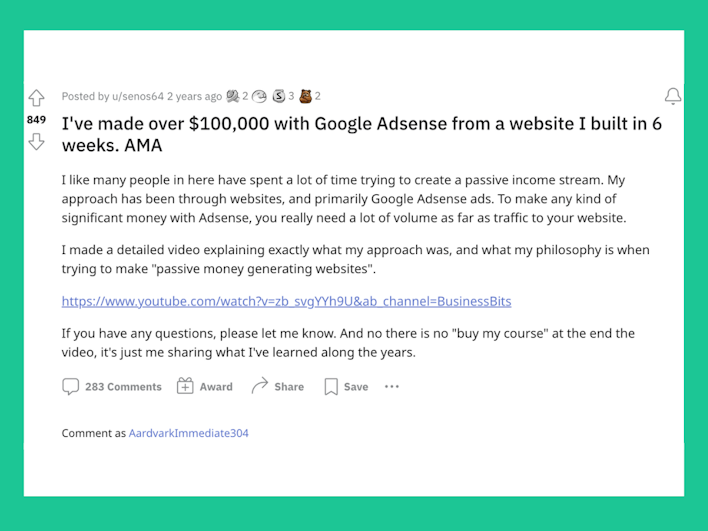
The summary of that Reddit thread is:

For his new YouTube channel, this was huge growth. He got 2 thousand new subscribers. Keep in mind beginnings are always the hardest, and 2 thousand means a lot more when you have 10 subscribers comparing when you have 10 thousand subscribers.
Build a community and nurture it.
Reply to all comments and try to really understand the intent behind one comment.
There are maybe 100 people wondering the same, and 1 answer can mean you got 100 people's trust.
We can see that Senad did an amazing job with youtube cards too.
If you pay close attention, there is an SEO strategy in his scripts, but with a focus on YouTube users.
In this way, you can get a high quantity of views, but even more importantly, the views from Q&A sites are high-quality too.
2. Link to Your Video in Your Email Signature
People that email you usually like you, and every email you send is an opportunity to drive traffic to your content. And great way to tell your contacts that you published a new piece of content.
3. Embed Your Videos in Blog Posts
If you have a blog, create a post related to your video's topic and embed the video in the post. This allows you to reach people who may not have found your video on YouTube. This is also a great way to provide additional context or information about your video, which can help to increase engagement and encourage viewers to subscribe to your channel.
4. Use Playlists
Playlists are a great way to organize and promote your videos to your audience. Create playlists based on topics and ensure they are easy to find on your channel page. By organizing your videos into playlists, you'll also be able to keep viewers on your channel for longer. When you improve your watch time, you will ultimately improve your SEO rankings.
5. Optimize Your Channel Page
Your channel page is your YouTube homepage, and it's the first thing people see when they visit your channel. To optimize your channel page, ensure it is visually appealing, organized, and easy to navigate. Use a professional profile picture and cover photo, and add a channel trailer that showcases your best videos. Don't worry if you don't have a designer on your team. You can create high-quality visuals by yourself. We use Canva for our business.
We covered a whole YouTube SEO process, and it might be overwhelming at first.
Improve one by one, and coming till here is a great first step and shows how determined you are.
To summarize it:
Do the video keyword research, choose the right keyword, make amazing video content around that keyword, optimize your video, and promote it in several ways.
We hope this will also help you and guide you to a better position on YouTube and Google.
